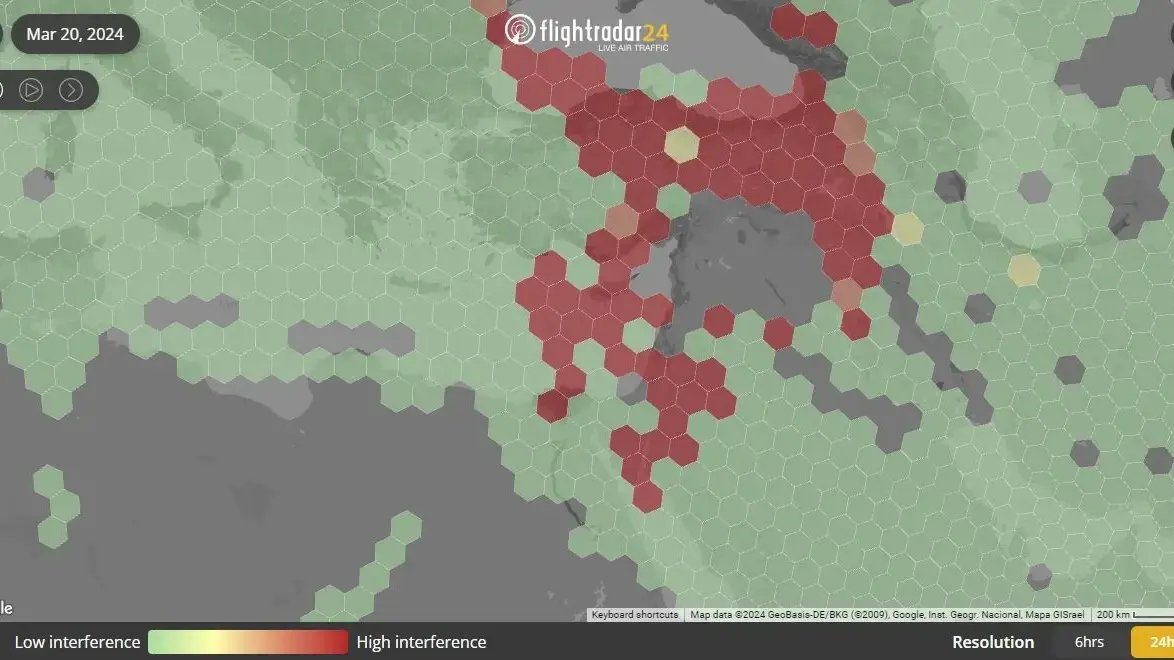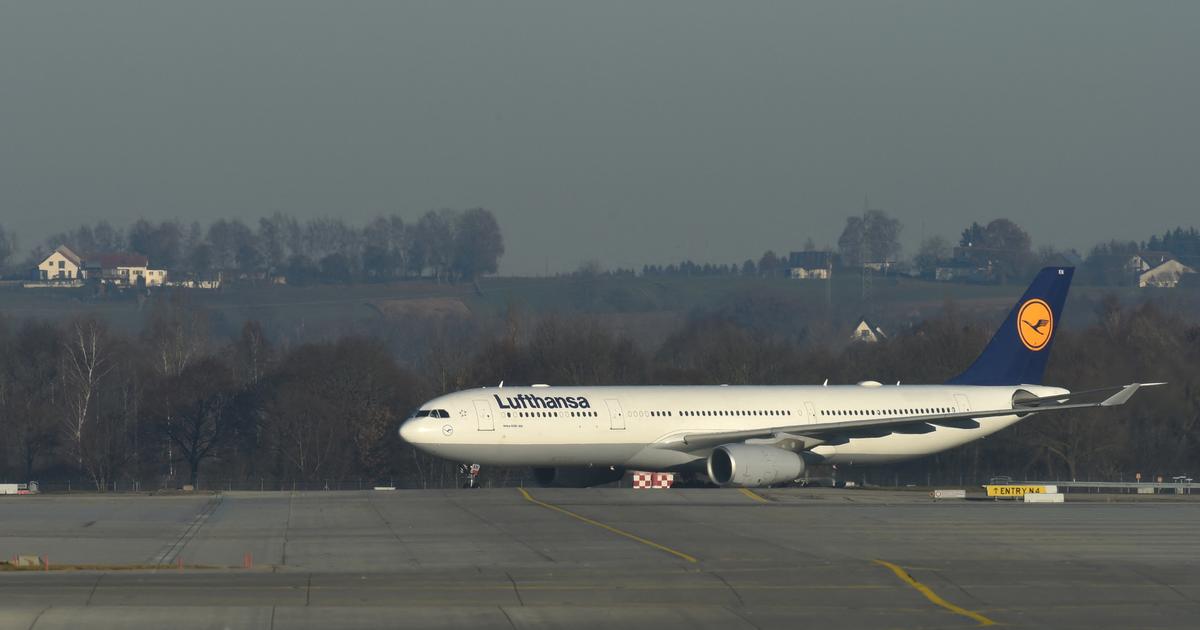Pelosi's flight to Taiwan makes history on Flightradar24 1:09
(CNN) --
On an average day, more than 200,000 flights take off and land around the world.
That figure includes commercial, cargo, and charter planes -- which account for almost half of the total -- as well as private planes, business jets, helicopters, air ambulances, government and military planes, drones, hot air balloons, and gliders.
Many of them have a transponder, a device that communicates the aircraft's position and other flight data to air traffic control.
And that signal can be picked up by inexpensive receivers based on a technology called ADS-B, or Automatic Dependent Surveillance.
This is, in a nutshell, what flight tracking websites do and give users a real-time look at everything in the sky (with a few exceptions).
An ADS-B receiver made by Flightradar24.
(Credit: courtesy of Flightradar24)
Now that information is reaching an audience beyond aviation enthusiasts.
When a US Air Force plane carrying House Speaker Nancy Pelosi landed in Taiwan in early August, more than 700,000 people followed the event live as it unfolded, via the service flight radar Flightradar24.
Historical tracking: Nancy Pelosi's flight to Taiwan was the most followed in the history of Flightradar24
The plane, a military version of the Boeing 737 called the C-40, took off from Kuala Lumpur in Malaysia before making a convoluted flight to Taipei to avoid encounters with the Chinese military, adding hours to flight time.
A Boeing C-40C carrying US House Speaker Nancy Pelosi takes off from Taipei on August 3, 2022, one day after SPAR19 became the most followed flight by users in the history of Flightradar24.
That meant the destination wasn't immediately clear and sparked conversations online as the plane slowly headed north toward the island.
As a result, it became the most followed flight in Flightradar24 history, with 2.92 million users monitoring at least a portion of the seven-hour journey.
The website is part of a popular group of flight tracking services alongside FlightAware and Plane Finder.
And it was founded in Sweden in 2006 “completely by accident,” FlightRadar24 director of communications Ian Petchenik recounted as a strategy to drive traffic to a flight price comparison service.
advertising
Flightradar24 gained notoriety in 2010, when a volcano eruption in Iceland grounded thousands of flights and attracted four million views: “That was certainly our first foray into international events, and how to show the public air traffic in Real time could influence the way people take in current events,” said Petchenik.
"The number of visits we received could have crashed our website, so what saved us was that there was nothing to show but a gap," she added.
American Airlines will cut 31,000 flights from its schedule in November
rising interest
Before Pelosi's trip, the record for the most followed flight on Flightradar24 was held by Russian opposition leader Alexei Navalny on his return to Russia, where he was expected to be arrested and sent to prison.
That flight, in January 2021, was followed by 550,000 people, breaking the previous record set in April 2020, when nearly 200,000 users tracked a Boeing 777 aircraft by tracing the symbols of Turkey's flag in the skies over Ankara, to celebrate 100 years of sovereignty.
Before that, in September 2017, thousands watched the brave Delta Boeing 737 flight headed straight into Hurricane Irma to land in Puerto Rico and take off 40 minutes later for JFK Airport, carefully positioning itself in the gaps between the arms of the hurricane.
Where others have turned back, Delta #DL431 presses on.
#irma
📡 https://t.co/XN6E2TcXUN pic.twitter.com/YRXxEduTok
– Flightradar24 (@flightradar24) September 6, 2017
Now, aside from high-profile events, the number of people following flights is also on the rise.
"We recorded that many people use the site to monitor a loved one's flight, track their own flight, or find the flight they're going to board later, to make sure the plane is on its way," Petchenik said.
"Another case is people who are interested in aviation, or who really like to follow certain types of aircraft. They can also go to the airport, go into the app and see what planes are coming. So you have people with a personal interest in aviation, because they own their own aircraft and leased it, or because they have a fleet of aircraft and want to know where they are. Finally, there are people with a professional interest in flight data. That is, the airlines. , airports and aircraft manufacturers who are using large data sets to gain insights about the industry.”
These are the world's worst airports for delays and cancellations this summer
How data is collected
To collect the data, Flightradar created its own network of ADS-B receivers.
And, they claim, this is now the largest network worldwide with about 34,000 units covering even remote areas like Antarctica.
Flightradar24 has receivers all over the world, including remote areas like Antarctica.
(Credit: courtesy of Flightradar24)
About a quarter of the receivers were built by Flightradar24 itself.
But most were put together by enthusiasts who volunteer the data.
Since building a receiver is relatively inexpensive, with components costing no more than $100, many people have joined since Flightradar24 opened its networks to the public in 2009.
Widespread deployment of receivers is essential to monitor flights globally, but there is an obvious problem with the oceans, where networks become sparse.
How do they get cover in the open sea?
"Finding islands where we can and making sure we have receivers there," Petchenik explained. "But recently we're using satellite ADS-B receivers so we can better monitor aircraft over the ocean.
However, our predominant source of data remains our terrestrial network.”
Having detailed and localized data can be useful to obtain early information in emergencies and accidents: “We store everything that reaches our servers and if necessary we can access a specific receiver and extract the raw data.
This is usually only done in the event of an accident or if we have a request from an air navigation service provider or an accident investigation,” Petchenik said.
Occasionally, the data may reveal the cause of an accident before an official investigation.
In the case of Germanwings Flight 9525, which the co-pilot deliberately crashed into a mountain on March 24, 2015, the data suggested a fairly clear picture: “One of the parameters that emerges within the total data set we receive in the case of the Germanwings flight is something called MCP ALT, that's the control that tells the aircraft's autopilot what altitude to fly at.
Looking at the data from that aircraft, the altitude value had been set to zero.”
However, not all data is available for all aircraft, as this depends on the type of transponders and receivers involved.
Aircraft owners or operators can also choose not to allow their data to be displayed publicly, as is often the case for military, government, and private aircraft.
For example, they can sign up for a Federal Aviation Administration (FAA) program called LADD ("Limiting Aircraft Data Displayed"): "We stick to that list," Petchenik said.
"[The list] allows operators to display their data differently, either anonymously or, in some circumstances, not displaying it at all. Of all the aircraft we routinely monitor, only 3% have any sample regulation type of your data".
flight control








